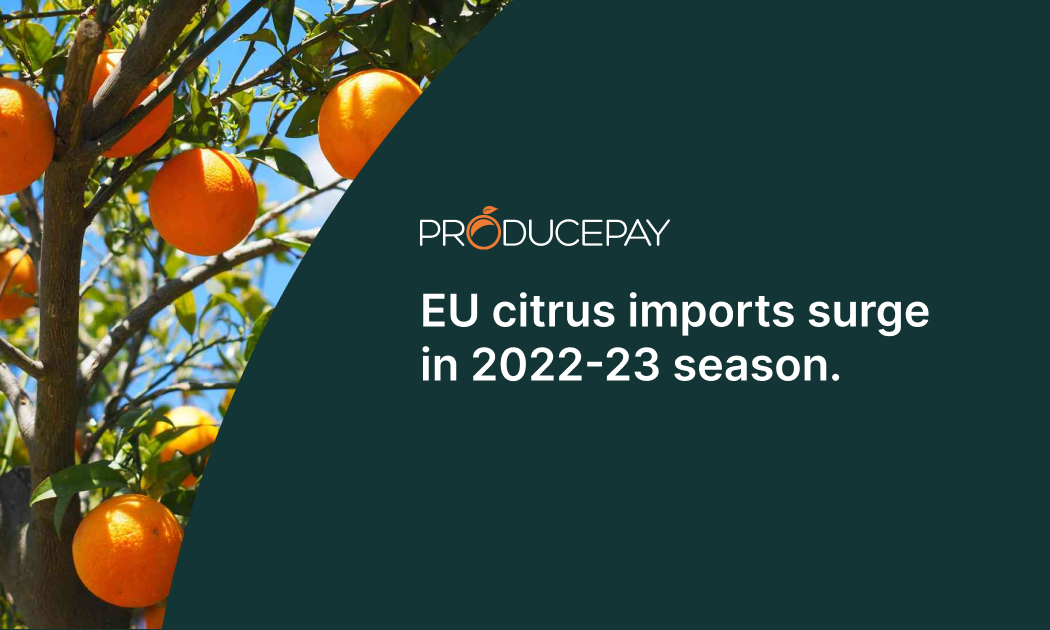
EU citrus imports surge in 2022-23 season.
The European Union’s citrus market experienced a notable upswing in imports during the 2022-23 season, with a 21.2% surge in imports over the first four months of this year. South Africa and Egypt are leading the charge in citrus supplies, with a notable focus on oranges.
Imports grow, but not for all citrus fruits.
Throughout the 2022-23 season, there has been observable growth in citrus imports into the European Union. The total volume imported between January and April 2023 was 566,897 metric tons, 21.2% more than last year. During the whole season, 1,222,440 metric tons of citrus were imported, an increase of 3% compared to the previous season.
Oranges stood out as the most imported citrus fruit in the EU, accounting for 51.3% of total imports, followed by mandarins and clementines at 27.3%, lemons at 11.4% and grapefruit at 10.5%.
While the overall import figures demonstrate growth, the performance of individual fruits varied. Oranges have notably surged this season, with a considerable 23.2% increase over last year, while mandarins have seen a more modest 1.1% growth. Conversely, lemon and grapefruit imports have declined by 23% and 12%.
Shifts in supplier country volumes
Egypt is the leader in orange exports, commanding an impressive 52.4% market share. South Africa is also a critical citrus supplier to the EU, contributing 31.6% of the total volume.
South Africa provides 36.6% of imported oranges, 22% of mandarins, 39% of lemons and 46% of grapefruit. However, Egypt experienced the most substantial increase in export volumes, 47% more than the previous season, followed by Zimbabwe (+28.8%), South Africa (+28.3%) and Israel (+8.9%). On the other hand, other countries saw decreases in their volumes to Europe, including China (-35.6%), Argentina (-30.2%), Morocco (-23.3%) and Turkey (-20%).
Importance of citrus imports for the EU
Citrus imports have assumed a critical role for the EU during this 2022-23 season, primarily due to an anticipated 18% decline in citrus production across the region. Adverse weather conditions have significantly impacted orchards, particularly in Spain, which projects an 18% decrease in production.
This situation is particularly concerning given that Spanish citrus represents 65% of total EU citrus production, making Spain a cornerstone for supplying the whole continent.
In light of these circumstances, increasing imports present a potential complementary solution to meet the citrus demand of the region. However, it’s important to note that this might not constitute a definitive remedy, as the price surge has precipitated a downward trend in consumption, thereby presenting additional challenges to the EU citrus market.
Diversifying and supplying quality citrus fruit
With citrus imports rising in the EU, buyers and distributors can diversify their supply through other growing regions, such as Latin America.
Whether you aim to expand your supply network and access quality produce or seize this trend to grow your citrus trade to the European market, ProducePay’s Marketplace offers access to a vast network of verified citrus sellers and buyers. Sign up today and boost your business with ProducePay.
Sources: Agronews Castilla y Leon, Portal Frutícola
